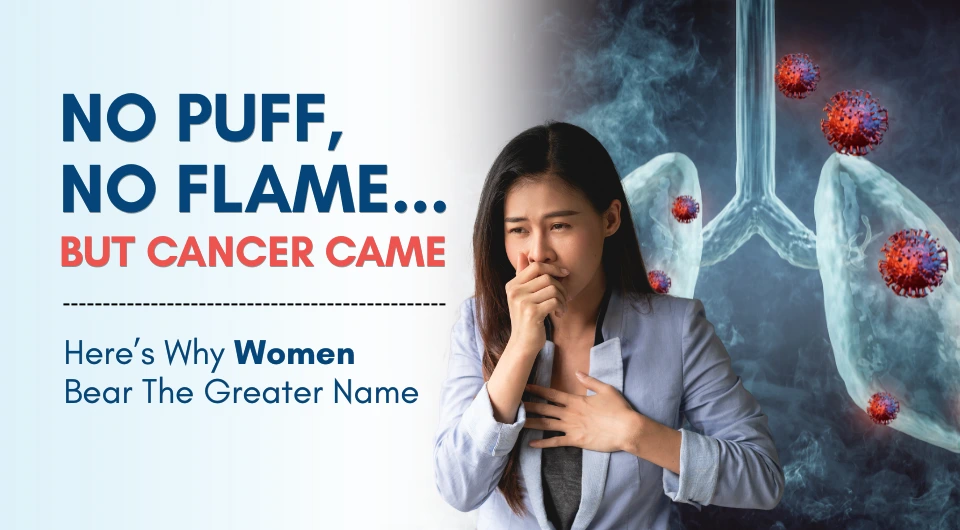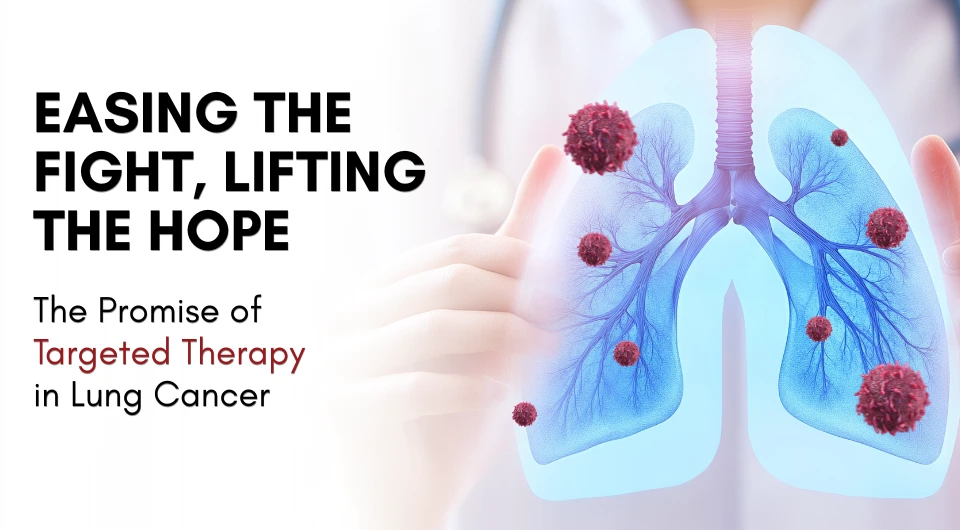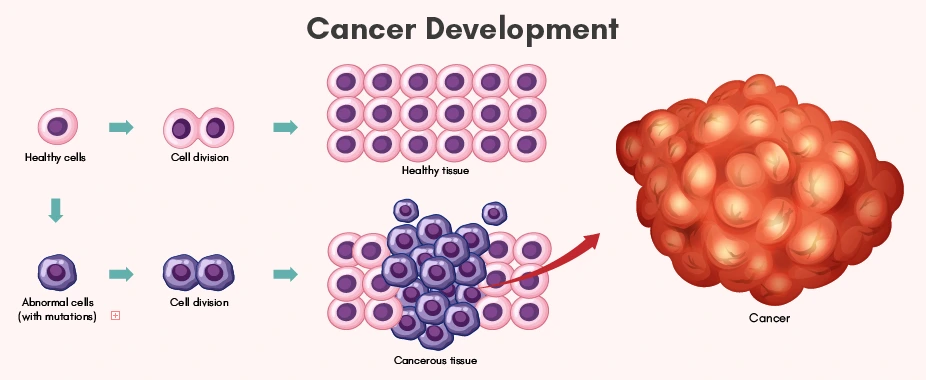You’ve heard of cancer, one of the world’s most feared diseases. There are many types. While breast cancer is the most commonly diagnosed, lung cancer claims the most lives.
We know lungs help us breathe, right? They bring oxygen into the body, a vital substance every cell needs to survive. Without oxygen, cells can’t produce energy, and our vital organs can quickly shut down. But do lungs stop there? No, they also remove carbon dioxide, a waste gas produced during energy generation. When we exhale, the lungs expel this gas, helping maintain a healthy balance of gases in our blood and preventing dangerous acidity.
But do our lungs stay healthy forever, or are they affected over time? Like any body part, lungs are prone to disease. Among the many lung conditions, lung cancer is considered one of the most frightening.
Now, what comes to mind when someone mentions lung cancer? Most people think of smoking as it is strongly linked to the disease. But is that always the case? The short answer is no. In this article, you’ll learn about lung cancer in non-smokers and how it’s impacting more people, especially women.
Rising Cases of Lung Cancer Among Non-Smokers
Before we go any further, let’s first understand who counts as a “non-smoker.” According to the Centers for Disease Control (CDC), a non-smoker is someone who has smoked fewer than 100 cigarettes in their entire lifetime.
Did you know that a large number of people who get lung cancer have never smoked?
A 2020 article highlighted that globally, about 15–20% of men with lung cancer are non-smokers. But here’s what’s surprising: Over 50% of women with lung cancer have never smoked. That’s a big number! In Asia, the stats are even higher, around 60 to 80% of women with lung cancer are non-smokers. In the U.S., a study showed that 19% of women with lung cancer didn’t smoke, compared to just 9% of men. So clearly, lung cancer in non-smokers is seen more often in women.
So why do non-smokers get lung cancer? Let’s explore some of the possible causes.
What Causes Lung Cancer In Non-Smokers
So, how do people who’ve never smoked still get lung cancer? There’s no one reason. But a few common causes have been found. These include:
- Radon gas (the second leading cause of lung cancer in the U.S.)
- Secondhand smoke
- Air pollution
- Harmful chemicals like asbestos or diesel exhaust
Long-term exposure to these can increase risk, even without smoking. Sometimes, lung cancer shows up in people who have no clear risk at all. Why? It could be due to random changes in the body. Or maybe causes we haven’t discovered yet.
Lung cancer in non-smokers is also different from the kind found in smokers. It often shows up in younger people. It may also involve different gene changes, some of which can help guide treatment.
Why Is Lung Cancer More Common in Women and in Asia?
It’s surprising but true: lung cancer in non-smokers is more common in women, and the rates are even higher in Asia. Remember, over half of the women with lung cancer have never smoked.
So, why is this happening? One possible answer lies in the kitchen.

According to a 2022 Gallup poll, women cook more meals than men in most countries (with Italy being an exception). But what does cooking have to do with lung health?
Cooking, especially frying or using open flames, releases harmful fumes from hot oil or burning wood, as well as when using biomass fuels or lacking proper exhaust systems. These fumes can damage the lungs over time. In many cultures, women spend hours cooking daily, often in poorly ventilated spaces.
This shows lung cancer can develop without smoking. Sometimes, everyday activities like cooking can play a role.
Biological Risk Factors for Lung Cancer in Women
This section explains the biological risk factors that may lead to the start of lung cancer.
1. Genetic Mutations:
It has been found that some women, especially non-smokers, develop lung cancer due to faulty genes, not smoking. One key gene is epidermal growth factor receptor (EGFR), which codes for a protein that helps your cells grow. When mutated, it causes cells to grow out of control.
Found in 50% of non-smoking Asian women with lung cancer. Other gene changes like ALK, ROS1, and TP53 also play a role, and are more common in non-smoking women.
2. Hormonal Factors:
You might be surprised to know that estrogen, the main female hormone, is found in lung tissue and can actually help cancer cells grow. Changes in hormone levels, especially during menopause or with hormone therapy, may affect cancer risk.
Some studies suggest hormone-replacement therapy (HRT) might lower lung cancer risk in some women, but more research is needed.
3. Weakened DNA Repair:
Our bodies are designed to repair damaged DNA, but in some women, this repair system doesn’t function as well. That means damaged cells can build up over time, raising the chances of lung cancer, even without ever smoking.
4. Chronic Inflammation & Immune System:
Women are more likely to develop autoimmune diseases that can lead to long-term lung inflammation. This constant irritation can damage cells over time and raise the risk of lung cancer.
5. Environmental Exposures with Biological Effects:
Even if someone has never touched a cigarette, their lungs aren’t entirely safe. Every day, indoor air pollution, like fumes from cooking, can slowly damage lung cells. Studies have shown that long-term exposure to fine particles (like PM2.5) may trigger harmful genetic mutations, such as EGFR, especially in women who spend more time cooking indoors.
Here, it is essential to emphasize that the mechanism by which air pollution causes cancer remains unclear, partly because air pollution is a complex phenomenon and people are exposed to it in various ways.
Same Symptoms, Same Warning Signs
Many ask about the signs of lung cancer in women or non-smokers. The fact is, whether a person smokes or not, lung cancer symptoms remain the same. It is important to know that early-stage lung cancer may be asymptomatic.
Therefore, it’s crucial to recognize the following symptoms as early as possible. Watch out for:

If anyone notices any of these, don’t ignore them; see a doctor promptly.
What Can You Do to Lower Your Risk?
While you can’t control everything, there are a few steps that can help reduce your risk of lung cancer:
- Avoid secondhand smoke: Smoke from others’ cigarettes, cigars, or pipes can still harm your lungs. Make your home and car smoke-free zones.
- Test for radon: Radon is a colorless, odorless gas that can build up indoors. Get your home tested and take action if levels are high.
- Stay safe at work: Follow health guidelines if you’re around carcinogens like asbestos, diesel exhaust, or industrial chemicals.
There’s Hope, Effective Treatments Exist
Yes, you have read that right! Treatments for lung cancer in non-smokers have come a long way. Scientists have developed targeted therapies that focus on specific genetic mutations found in some patients.
One of the most promising options is a group of drugs called EGFR tyrosine kinase inhibitors, including erlotinib, gefitinib, afatinib, and osimertinib.
These drugs have shown better response rates and improved survival, especially in non-smokers.
Bringing It All Together
In the end, lung cancer in never smokers, especially women, is a silent but serious threat that deserves more attention. Even if someone has never smoked, it’s important to be aware of the risks, symptoms, and ways to protect oneself. Remember, early detection can save lives, and advances in treatment are bringing new hope every day.
Stay informed, stay vigilant, and take charge of your lung health. Your Lungs deserve it!
Disclaimer: This blog/content is for informational purposes only and should not be considered medical advice. Always consult a healthcare professional before starting any treatment. The content is not intended to diagnose, treat, cure, or prevent any condition. Purchase medications only from reputable sources to ensure safety and authenticity.






